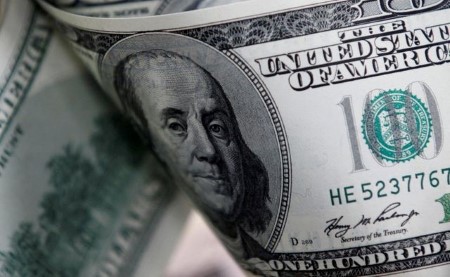




Policy Rate Updates: Double cut finale
 DOWNLOAD
DOWNLOAD

Monthly Economic Update: One for the road
 DOWNLOAD
DOWNLOAD

Inflation Update: Still low, still slow
 DOWNLOAD
DOWNLOAD


Dollar slips on recession fears; eyes on US CPI, central bank meetings

SINGAPORE, Dec 9 (Reuters) – The dollar retreated on Friday as worries over a slowdown in the United States mounted, with traders on guard ahead of a slew of central bank meetings next week, with the Federal Reserve taking centre stage.
Against the greenback, the euro rose 0.25% to USD 1.0581, edging toward its six-month peak hit at the start of the week and on track for a third straight week of gains.
Sterling firmed 0.27% and stood at USD 1.2274, not far off Monday’s six-month high of USD 1.2345. The Japanese yen jumped about 0.4% to 136.13.
The number of Americans filing new claims for jobless benefits increased moderately last week, data showed on Thursday, with the so-called continuing claims rising to a 10-month high in late November, adding to fears that the world’s largest economy may slide into recession next year.
“We’ve got a very awkward outlook the next year, which is playing into traders’ thought process. We’re looking…at much lower growth globally, lower growth out of the US as well,” said Jarrod Kerr, chief economist at Kiwibank.
The US dollar index fell 0.23% to 104.57, after slipping 0.3% overnight.
It has fallen nearly 7% this quarter, putting it on track for the largest quarterly decline since 2010.
“It’s (also) very much positioning at the moment,” Kerr added, ahead of the Fed’s policy meeting next week.
Money markets are pricing in a 93% chance that the Fed will raise rates by 50 basis points, with rates now seen peaking at just below 5% in May.
Closely-watched US inflation data is also due next week, with any downside surprise in November’s CPI likely to trigger another greenback selling spree.
Last month, the dollar dived after data showed that US consumer prices had risen less than expected in October.
Expectations that the Fed will scale back the pace of its interest rate hikes and that rates may not rise as high as previously feared have knocked the dollar more than 8% off its two-decade peak against a basket of currencies hit in September.
Yields on US Treasuries have also slumped, with the two-year yield, which typically reflects interest rate expectations, last at 4.2838%, away from its 15-year high of nearly 4.9% hit last month.
A closely watched part of the US Treasury yield curve, measuring the gap between yields on two- and 10-year Treasury notes was inverted at -83 bps.
An inversion of this yield curve is typically a precursor to recession.
The European Central Bank and the Bank of England will also announce their monetary policy decisions next week, with markets keenly watching for guidance on 2023’s outlook.
Elsewhere, the Aussie was up 0.26% at USD 0.67875, while the kiwi gained 0.42% to USD 0.6407.
The antipodean currencies have been beneficiaries of China’s recent easing of its stringent COVID restrictions, given that they are often used as liquid proxies for the Chinese yuan.
Against the dollar, the offshore yuan rose roughly 0.1% to 6.9541.
Optimism over China’s path to reopening has overshadowed the country’s recent dismal data releases. China’s factory-gate prices showed an annual fall for a second month in November while consumer inflation slowed, highlighting very weak demand.
“The China reopening theme is a big one, especially (coming) from a low base,” said Christopher Wong, a currency strategist at OCBC.
“Chinese assets were deeply oversold prior to the recent rebound. More reallocation back to RMB-assets will support RMB.”
(Editing by Jacqueline Wong and Kim Coghill)
This article originally appeared on reuters.com





 By Reuters
By Reuters